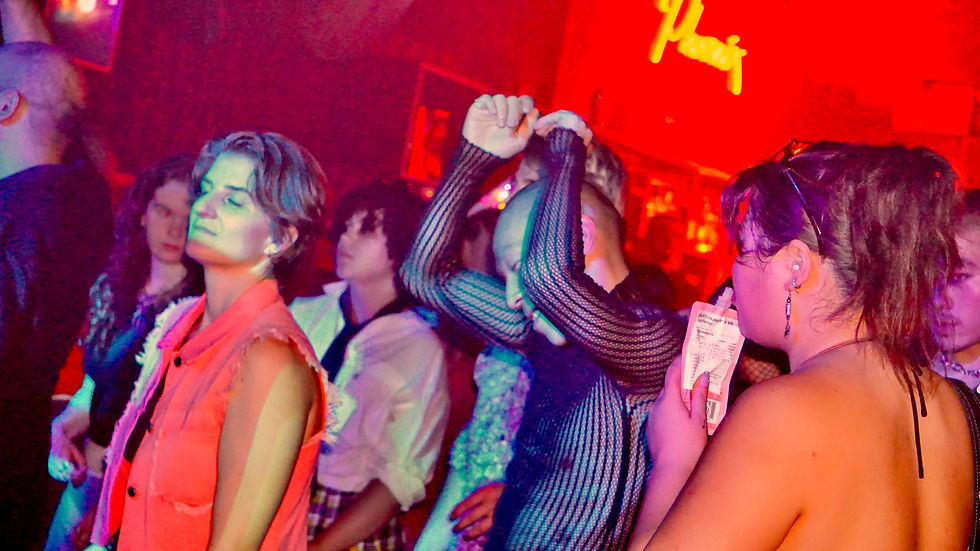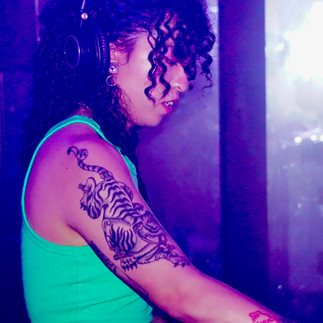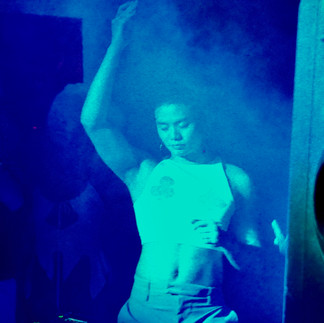By Liam Hansen (he/they)
feature writer
Back in 2021, Auckland Pride was gearing up to put on their first ever official Pride Month after an uncertain, Covid-tinged 2020. This saw the expansive multi-day festival stretch out for the entire month of February, aiming to celebrate and advocate for the takatāpui and rainbow communities of Tāmaki Makaurau like never before. Aside from the city being plunged into Covid alert level three, and 180 events almost entirely cancelled due to a nationwide Omicron outbreak - nothing went wrong!
Covid was a rough patch for the Auckland Pride Festival, but it’s not like they hadn’t made it through difficulties before. The festival is built upon decades of protest and hardship experienced by takatāpui and rainbow communities across the city. While the fight is far from over, and Auckland Pride still remains a platform for activism - the festival as a whole has also become one of the largest arts events in Oceania. The 2023 Festival has hosted everything, from queer magic shows, to interactive sculpture exhibitions, to film screenings and beyond. Although the ghost of Covid past, present, and future continues to loom, with a couple of surprise homophobic weather events , it feels like a turning point has been made in celebrating Pride in Tāmaki Makaurau. I wanted to know what goes on behind the scenes to produce such a monumental festival, and what goes into the creation and curation of queer arts at a national scale . It must be a massive team, with dedicated members working across the board, right?
Well, no. As it turns out, the day-to-day operations of Auckland Pride are largely run by duo - Max Tweedie, executive director and Nathan Joe, creative director. Even these roles are fairly new - “Auckland Pride has only its current executive director since 2019 - so at its current inception, it’s quite a new organisation”, Joe explained to me. The festival's inception time is difficult to pinpoint - anywhere between 30-50 years, with the early era of activism and the Hero Parade. Or, you could point to the beginning of the modern Auckland Pride Parade and subsequent events in 2013. However, the current iteration has only been around for five years, picking up the pieces after police uniforms were banned in the parade, causing a rift in the community. Joe largely credits this revamp to Tweedie, and reflected on how he pushed the organisation into a new form of Pride, only related to former events by name - “At what point is it a new ship if you’ve rebuilt all the parts?”.
This brings up a difficult modern ordeal for the Auckland Pride team, where they try to figure out how they can honour the past, while moving forward. We’re in a very different Auckland in 2023 compared to 1972, and for Auckland Pride to continue at its current level a balance needs to be struck. Joe frames himself as a part of the effort to move forward, having only begun last year, after the first and previous creative director, Elyssia Wilson- Heti, bowed out from the role. It’s been a weird start for him, having already garnered a stunning reputation for his electric theatre productions like Scenes From A Yellow Peril and Gay Death Stocktake. He described his first tasks as creative director as a “full time job where I figure out how to fund my full time-job.” He found the lack of arts funding in Auckland pervasive to the point of crisis, and launched his tenure with an open callout for better funding so he can effectively do his job and support queer artists across Tāmaki.
Thankfully, Joe considers the organisation to be in a better place in the days before the festival, than it was when he arrived. I was almost surprised with his level of calm and optimism - but the vast majority of Pride Month is in the hands of the event producers. He’s spent time developing relationships with artists, gaining an understanding of what people in Auckland want, fostering the community and encouraging people to submit work. “You can’t just be waiting for people to throw art at the festival. That stuff doesn't happen by itself, it only happens when you create fertile platforms, and do outreach to make sure people know that they should be or there is a reason to be making art during Pride.” This work led to the core new creations of Auckland Pride in 2023 - Joe particularly highlighted Te Timatanga as their primary takatāpui focused offering, showcasing the ways queer and Māori communities intersect and providing spaces for their community to connect over positive kōrero and unification.
Alongside the full timers, a group of contracted employees work hard to see Pride come to light, often managing their own events and exhibitions within the festival. Nathan himself had a playreading of his titled Losing Face in the Samesame But Different queer literary festival that takes place parallel to Pride. Working on multiple projects can also be seen in Tommy Jiang, Auckland Pride’s production manager and founding member of All My Friends (AMF), a four person arts collective focused on celebrating Queer and Asian voices in Tāmaki Makaurau. As we met for coffee, Jiang went over various examples of what AMF has put together in the past few years - club nights, performances, markets and more. “There aren’t that many opportunities to be creative in Auckland - and we realised that it’s easier when there's a brief, or a space that can activate that creativity, when there’s such pressing things in life like work and uni that often get in the way.” The group came out of a frustration with the queer nightlife scene in Auckland often feeling very one note and appealing to majority demographics, and have been working since 2019 to bring about new, safe and alternative spaces.

‘Lychee Baybee’, AMF’s offering for the Auckland Pride Festival, is particularly focused on celebrating queer Asian DJ’s and performers for the Lunar New Year. There’s plenty that’s special about the party, including its lineup - Imugi 이 무기, Little Bok Choy and Maiden Chai NOIR. But the mahi AMF has done in the lead up to the event is unique and incredible, creating a character for Lychee Baybee with a developing style and backstory, even down to its name. Jiang explains that fetishisation is a prominent part of the queer Asian experience and that Lychee Baby, as a character, symbolises taking control of that narrative. Jiang then explains what this means, "You can't festishise me, because I know how much I'm worth. And if I engage with you, that's my own choice." Jiang also reflected on the specific usage of an anime/manga style, and how that medium has evolved since his childhood. “The characters are so hyped and so cool now, so it's sort of us paying homage to a lot of our childhood interests. Lychee Baybee as a character represents a lot, but at her core she’s just the empowerment we didn’t have growing up.”
The chat I had with Jiang put it all into perspective - Auckland Pride Festival is now a full-blown celebration of queer art. Joe told me this directly when we spoke - “Lychee Baybee is a really interesting case study, because it’s first and foremost a club party. But within a pride context, it’s arts and culture, because so much of queer history is our community events.” This approach frames ‘queer art’ not as a filter, but a method of expansion, seeing mediums that wouldn’t traditionally be perceived as pieces of experimental artwork and culture celebrated as such. The range that queer art encompasses can be seen in how the Queers and Wares Market saw a host of plush toys, prints and pottery made by local queer creators (more often than not, frog or mushroom themed. The gays love goblincore!)
My flatmate and I spent the night after the Queers and Wares Market continuing to roam Karangahape Road. Over at Studio One Toi Tū’s pop-up, an exhibition of various photographs taken by Fiona Clark were shown, chronicling Auckland's late 70s queer community that’s explored further in the documentary Fiona Clark: Unafraid. Under the same roof, Art Chemist was running at a stripped back desk in the corner. The interactive and free theatre performance sees clients consulted on their current energy levels and emotions, which leads to them being prescribed a new piece of local art to discover and enjoy. My chronically tired self got recommended “Pride and Prejudice Part One”, over at Bergman Gallery - an exhibition I hadn’t heard of before and was excited to see. All of this and more is what encompasses queer art; the variety, passion and strength of our community coming together as one - even in the face of adversity.

I started planning this piece in late January, intending to ruminate on how Covid restricted the last two pride festivals, and how the 2023 festival was unleashed in its full force - but that didn’t happen. The floods in Auckland saw many of the festival's early events cancelled or postponed, and just as it felt like the dust was about to settle, Cyclone Gabrielle rose from the floodwaters to lash out on our poor, fragile city even more. A point Tommy made to me, just a day before the worst of our floods, was that All My Friends and Auckland Pride just wanted to see ‘Lychee Baybee’ and the rest of the remaining festival through, after having just cancelled the year before. And you know what? They did. ‘Lychee Baybee’ went on without a hitch, and so did the rest of the festival whenever it was safe and secure. Even the outdoor “Big Gay Out" music festival was postponed out of the typical pride period to the 12th of March (which means that you, dear reader, can still have a gay ol’ time over in Coyle Park!)
Of course, Auckland Pride has faced difficulties this year, hence the continued air of activism. We still see marches, protests and discussions on how rainbow and takatāpui rights can be improved and protected in Aotearoa - in a political climate where hate speech reforms have been delayed, with serious effects on our community. But we can still celebrate our achievements and what we have, even if we have to break the rules a little bit. If everything was fine, then we wouldn’t need Auckland Pride. But for as long as we still need it, the organisation will continue to exist and fill out the gaps of heteronormative society.







Comentarios